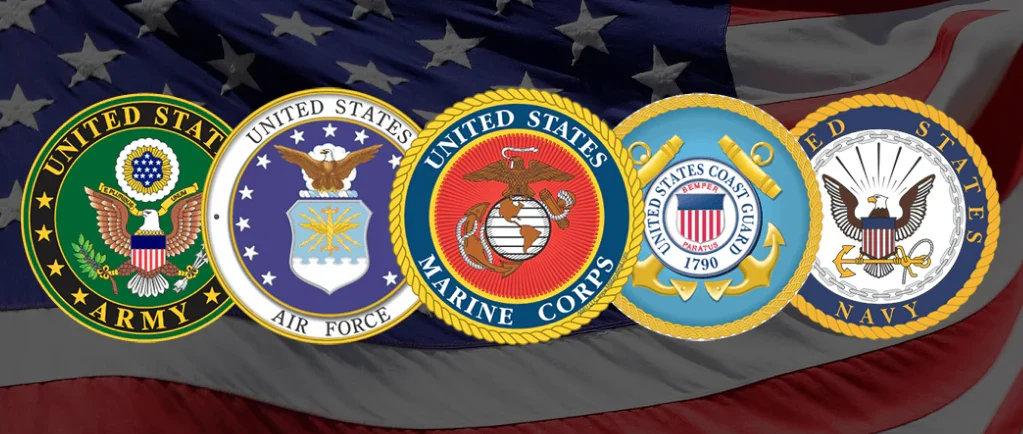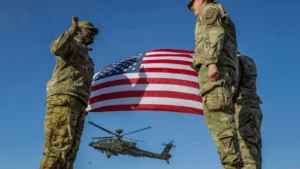Understanding the US Military Branches
Ever wondered about the different parts that make up the United States military? It’s a vast and complex organization, really, with each branch playing its own unique role. We often hear about the Army or the Navy, but there’s so much more to it. Getting a grasp on what each branch does, its history, and even its training requirements can offer some pretty fascinating insights into how the nation’s defense operates. Let’s take a closer look, shall we?
The Army: Ground Force Backbone
The Army, it’s fair to say, is the grand old dame of the US military. Its roots stretch all the way back to the Continental Army, formed on June 14, 1775. That was, you know, to fight for independence against the British during the American Revolutionary War. After that whole ordeal, the Continental Army was actually disbanded, and the US Army as we know it today was officially created on June 3, 1784. It’s the land service branch, obviously, and its main job is to protect US land and support national policies.
Now, this might surprise some, but it’s also the largest branch in the US. We’re talking about around 1 million soldiers here. Despite its size, it’s often seen as one of the stricter branches, and basic training? That’s a solid 10 weeks. The Army is generally divided into three main components: the regular army, the Army Reserve, and the Army National Guard. The regular army is where soldiers serve full time, making it their primary occupation. These folks are the ones most readily available for immediate response to global crises or military requirements. The Reserve and National Guard, though, they offer a different path. Soldiers can serve part time, keeping their civilian careers, and they tend to focus more on support roles and specialties. Think medical, legal, engineering, or logistics. It’s a pretty diverse setup, really.
- Oldest Branch: Traces its origins to the Continental Army (1775).
- Largest Branch: Approximately 1 million soldiers.
- Basic Training: 10 weeks.
- Components: Regular Army (full-time), Army Reserve, and Army National Guard (part-time, support roles).
- Primary Role: Land defense and national policy support.
The Navy: Global Maritime Power
When you talk about naval power, the US Navy often comes up as, well, arguably the most powerful in the world. And by tonnage? In 2021, it was a staggering 4.5 million tons. In terms of personnel, it’s the third largest of the US military service branches, with around 350,000 sailors. The Navy is the second oldest branch, with its predecessor, the Continental Navy, established just four months after the Continental Army. It certainly made significant contributions throughout history, like blockading the Confederacy during the American Civil War and playing a crucial role in defeating Imperial Japan in World War II.
Their mission is quite clear: recruit, train, equip, and organize to deliver combat-ready naval forces. The goal, of course, is to win conflicts and wars, all while maintaining security and deterrence through a sustained forward presence. That last bit, the “sustained forward presence,” is particularly vital today. The Navy is frequently used for deterrence, for instigating a bit of fear in potential adversaries. Think about it: sending aircraft carriers near territories where tensions are high. It definitely sends a message. Just like the Army, if you’re looking to join the Navy, you’ll need to complete 10 weeks of basic training.
- Global Power: Most powerful navy by tonnage.
- Second Oldest: Predecessor, Continental Navy, formed shortly after the Continental Army.
- Basic Training: 10 weeks.
- Mission: Deliver combat-ready naval forces, maintain security, and deter through forward presence.
- Historical Impact: Key roles in the American Civil War and World War II.
The Air Force: Dominance in the Skies and Cyberspace
The Air Force has a rather interesting history, starting off as part of the US Army back in 1907. But then, in 1947, it branched out, becoming its own independent service. This makes it the second youngest branch, a fairly recent addition compared to some of its older siblings. Their priorities are pretty clear: asserting air dominance and providing critical intelligence. This includes things like reconnaissance, finding targets, and so on.
The Air Force offers immense support to ground troops. They work to ensure that land forces aren’t attacked from the air, and they also engage enemy ground troops or strategic positions from above. Perhaps because of this crucial role, it’s often cited as the most funded branch in the US military, with a budget that can reach hundreds of billions of dollars. Some folks even joke about it, calling it the “Chair Force,” suggesting it has the best locations, facilities, and overall quality of life. Beyond the skies, the Air Force also operates in cyberspace, providing cyber defense for US networks and, well, potentially attacking enemy ones. Basic training for the Air Force is a bit shorter, around 8 and a half weeks. The culture there, it seems, really centers on pilots, seeing them as the core component, with all other positions essentially supporting their operations.
- Origin: Separated from the Army in 1947.
- Most Funded: Largest budget among branches.
- Basic Training: 8.5 weeks.
- Priorities: Air dominance, intelligence (reconnaissance, target acquisition), cyber defense.
- Culture: Pilot-centric, with other roles in support.
The Marine Corps: Expeditionary and Elite
The Marine Corps, while distinct, is actually organized under the Department of the Navy. It’s widely considered one of the most respected and cohesive branches in the entire military. Their motto, Semper Fidelis, which means “Always Faithful” in Latin, really speaks to their strong sense of camaraderie. Their traditions, like the Marine Corps birthday celebrated every November 10th where the oldest Marine passes the first slice of cake to the youngest, further reinforce this bond.
Marines focus on what they call “tip of the spear” invasions and amphibious warfare. They’re known for being one of the quickest reaction forces, often found guarding US embassies around the world. Their basic training? It’s generally considered one of the hardest and longest, requiring 13 weeks of intense effort. They’re also known for having a very strong culture of obedience. Interestingly, there’s been a historical competitive relationship between the Marine Corps and the Army, particularly when it comes to funding and missions. This might be because some of their capabilities can, at times, overlap.
- Organization: Under the Department of the Navy.
- Motto: Semper Fidelis (“Always Faithful”).
- Basic Training: 13 weeks (one of the longest and hardest).
- Focus: Expeditionary invasions, amphibious warfare, quick reaction force.
- Cultural Aspect: Strong camaraderie and obedience.
The Coast Guard: Maritime Law and Safety
The Coast Guard, often seen as a bit different from the other branches, primarily handles maritime law enforcement missions. They have jurisdiction in both domestic and international waters, which is a pretty broad scope. Much like the Navy, their personnel are assigned all over the world, with forces routinely deploying to both coastal and deep-water regions.
Beyond law enforcement, they play a vital role in saving lives at sea, intervening in natural disasters like tsunamis, and intercepting illegal migrations and drug trafficking. It’s a demanding job, for sure. During peacetime, the Coast Guard operates under the US Department of Homeland Security. However, and this is a key point, in wartime, it can be transferred, either in whole or in part, to the US Department of the Navy. This transfer can happen by order of the President or by an act of Congress. Their basic training is 8 weeks long, making it one of the shorter ones among the branches.
- Primary Role: Maritime law enforcement.
- Jurisdiction: Domestic and international waters.
- Other Duties: Search and rescue, disaster response, interception of illegal activities.
- Peacetime Operation: Under Department of Homeland Security.
- Wartime Operation: Can transfer to the US Department of the Navy.
- Basic Training: 8 weeks.
The Space Force: The New Frontier
The Space Force is, without a doubt, the youngest branch of the military. It was officially signed into law by President Trump in 2019, making it the first new independent military service since the Army Air Forces were reorganized into the US Air Force back in 1947. That’s a pretty significant gap, wouldn’t you say? It’s organized under the Department of the Air Force, which makes some sense given their shared domain.
It’s also the smallest branch, with just around 8,600 military personnel and a reported 77 spacecraft. Despite its youth, its roots can be traced back to the beginning of the Cold War, with the first military space program starting in 1945. They’ve actually participated in every conflict since then, with many referring to the Persian Gulf War as the “first space war.” Their official mission is to provide freedom of operation for the United States in, from, and to space. And if you’re thinking about joining this cutting-edge branch, they currently have the shortest basic training, clocking in at 7 and a half weeks.
- Youngest Branch: Established in 2019.
- Smallest Branch: Approximately 8,600 personnel and 77 spacecraft.
- Organization: Under the Department of the Air Force.
- Mission: Ensure freedom of operation in, from, and to space.
- Basic Training: 7.5 weeks (shortest).
- Historical Context: Roots in Cold War military space programs.
A Quick Look at Basic Training Lengths
It’s interesting to see the variations in basic training across the branches. While some require a significant time commitment, others are a bit shorter. This table might help put it into perspective:
| Military Branch | Basic Training Length |
|---|---|
| Army | 10 weeks |
| Navy | 10 weeks |
| Air Force | 8.5 weeks |
| Marine Corps | 13 weeks |
| Coast Guard | 8 weeks |
| Space Force | 7.5 weeks |
As you can see, the Marine Corps definitely stands out with its 13-week regimen, often cited as the most rigorous. The Space Force, on the other hand, seems to have the quickest entry into service, at least in terms of initial training.
Basic Training Lengths by Military Branch
This visual representation, I think, makes it quite clear how the initial training periods stack up across the different branches. It’s a neat way to see the data, isn’t it?
Bringing It All Together: A Summary
So, we’ve taken a pretty detailed tour through the various branches of the US military. From the venerable Army, with its deep historical roots and vast land-based operations, to the powerful global reach of the Navy, and the ever-evolving dominance of the Air Force in both air and cyber realms. We also touched upon the elite, expeditionary nature of the Marine Corps, the crucial maritime law enforcement and safety missions of the Coast Guard, and the newest frontier, the Space Force, safeguarding our interests beyond Earth. Each branch, it’s clear, has its own distinct history, mission, and culture, all contributing to the broader national defense strategy.
Key Takeaways
- The US military is composed of six distinct branches: Army, Navy, Air Force, Marine Corps, Coast Guard, and Space Force.
- Each branch has a unique historical background, with the Army being the oldest and the Space Force the youngest.
- Their missions vary significantly, covering land defense, global maritime power projection, air and cyber dominance, expeditionary warfare, maritime law enforcement, and space operations.
- Personnel numbers and basic training lengths differ across the branches, reflecting their specialized roles and demands.
- Despite their individual focuses, all branches contribute to the overarching goal of national security and defense.





